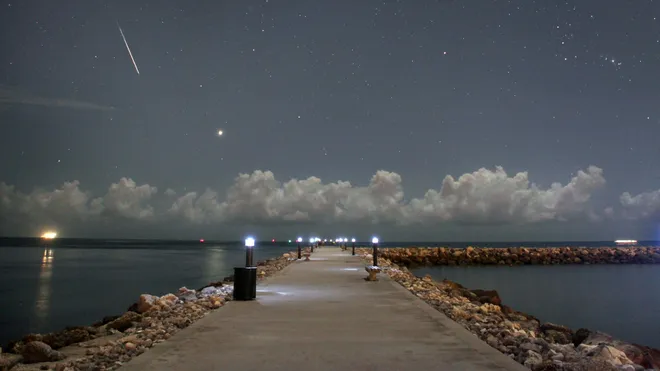The Perseid meteor shower is renowned for being one of the most impressive celestial events of the year. Known for its dazzling meteors and blazing fireballs, the Perseids offer a spectacular show that captivates skywatchers around the globe. Unlike other meteor showers that peak in the colder months, such as the Leonids in November or the Geminids in December, the Perseids grace the sky during the warm summer months, making it a favorite among summer stargazers. This year, the Perseids are set to reach their peak this weekend, providing an exceptional opportunity to witness one of nature’s most enchanting light displays.
)
When and How to See the Perseid Meteor Shower
The Perseid meteor shower is active from July 14 to September 1, with the peak of activity expected to occur on Sunday and Monday, according to the American Meteor Society. During this peak period, spectators can potentially see up to 100 meteors streaking across the sky each hour, leaving behind vibrant trails of light and color. This year’s viewing conditions are particularly favorable, as a half-illuminated moon is expected to set around 11:30 p.m. local time, clearing the sky for optimal meteor viewing. With the moon out of the way, the meteor shower will be visible until dawn, offering ample time to enjoy the celestial display.
Optimal Viewing Conditions and Meteor Origins
To view the Perseid meteor shower, find a location away from city lights and any sources of light pollution. The best viewing is in the Northern Hemisphere, where the meteors will be most visible. Ensure the sky is clear and free of clouds for the best experience.
The Perseids originate from the constellation Perseus and are composed of debris from comet 109P/Swift-Tuttle. As Earth passes through the comet’s debris trail each year, these fragments enter our atmosphere at high speeds, creating the striking meteor streaks we see. Discovered in 1865 by Italian astronomer Giovanni Schiaparelli, Swift-Tuttle is a colossal comet with a diameter twice that of the asteroid believed to have caused the extinction of the dinosaurs.

Although the Geminid meteor shower is known for its strength and consistency, the Perseids remain spectacular, with 50 to 100 meteors visible per hour under ideal conditions. The shower is also famous for its fireballs—large, bright explosions that can persist longer than typical meteor streaks. With its incredible meteor activity and potential for stunning fireballs, the Perseid meteor shower is a highlight of the astronomical calendar. Don’t miss your chance to witness this celestial phenomenon and enjoy a night of awe-inspiring stargazing.
